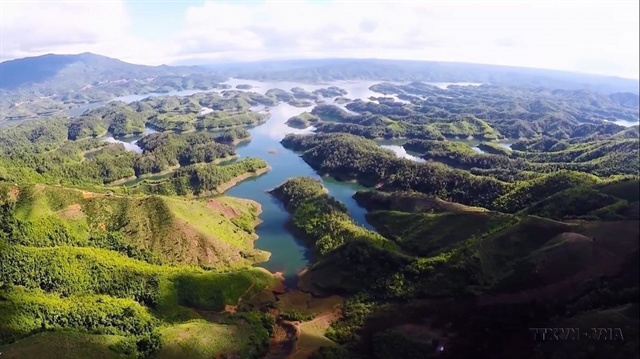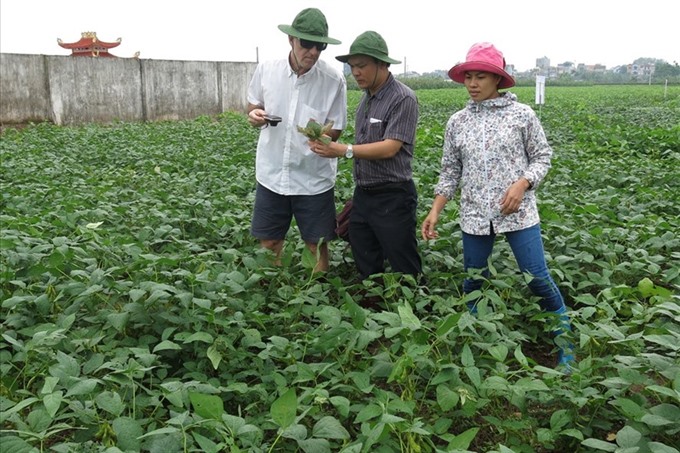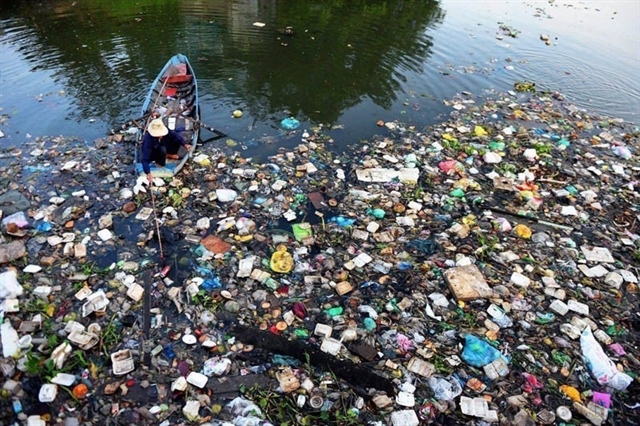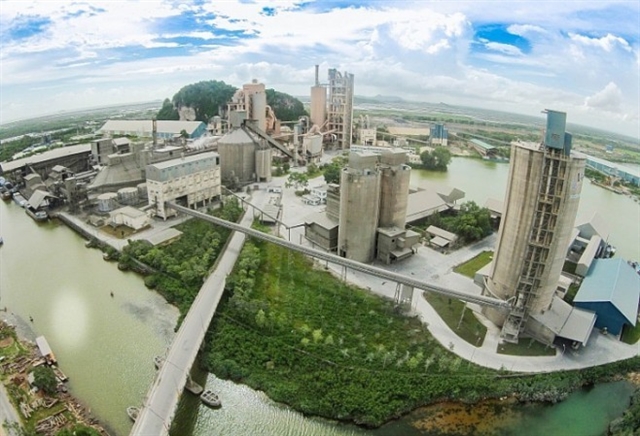 Opinion
Opinion

Lê Đức Thảo, Director of the Department on Advantages and Disadvantages of Mutation at the Agriculture Genetics Institute, talks to the newspaper Lao động (Labour) about the application of nuclear technology in the country’s primary industry – agriculture.
 |
| Director of the Department on Advantages and Disadvantages of Mutation at the Agriculture Genetics Institute Lê Đức Thảo (centre) visits a soya bean field. — Photo laodong.vn |
Lê Đức Thảo, Director of the Department on Advantages and Disadvantages of Mutation at the Agriculture Genetics Institute, talks to the newspaper Lao động (Labour) about the application of nuclear technology in the country’s primary industry – agriculture.
Do you have any comments on the application of nuclear technology in our agriculture industry?
Việt Nam has applied nuclear technology in our agriculture at a very early stage, including in the selection of plant species through sudden plant mutation, protection, quarantine and others.
In my opinion, in Việt Nam we have achieved quite remarkable success in seed selection, which has been recognised by international scientists.
Of the more than 3,200 genetically modified crops selected in the world, Việt Nam has developed 64 species, ranking eighth internationally. The most well-known rice species are the DT 10 and Khang Dân rice. These two rice species have won high acclaim from Vietnamese farmers.
In 2014, the Việt Nam Agriculture Genetics Institute (AGI) won a major award from the International Atomic Energy Agency (IAEA). And Việt Nam has been acknowledged by the IAEA and FAO for its high productivity in planting genetically modified rice species – a great contribution to the country’s social security.
Will you please tell us a bit more about the positive economic impacts of the use of innovative technologies in agriculture, for example X-ray radiation to treat food before export?
It is no doubt that the merger of the agriculture and technology will have positive impacts on the economic efficiency of the agricultural sector. The development of the Khang Dân and DT-84 rice species have helped Việt Nam escape from the chronic rice shortages in the years before 1990. In addition to rice species, the AGI has also created new soybean species, particularly the soybean DT-84 which is well suited to the Vietnamese climate and soil conditions. Soybean DT 84 made its first début in 1995. And more recently the AGI has introduced a new soybean species code named DT2008, with productivity 1.5 times higher than that of DT 84. The novelty of DT2008 soybean is that it has better productivity and higher nutrition than other soybean species, particularly omega – 3; omega- 6 and beta carotene. The other novel aspect of the DT 2008 soybean is that it is well adapted to climate change.
A notable achievement that the AGI has developed, and that has been highly acclaimed, is its X-ray technology in food exports. Pretty soon the X-ray technology will be applied in land erosion prevention activities.
Do you think that the X-ray technology in food items will become a way for our country to increase its exports of agro-products?
Now, all food and vegetables exported to the USA or Europe have been X-rayed. At present, besides the Hà Nội X-Ray centre, which is affiliated with the Việt Nam Atomic Institute – Vinatom, we also have some private centres in the South. However, their operation mainly focuses on fruit and food X-Rays.
It is forecast that the food and vegetable X-ray activities will increase considerably in the near future, so it is high time for us to think of installing industrial X-ray machine.
What about the plan to build a nuclear science and technology centre in Hà Nôi with support from the Russian government?
The centre will be built with a preferential loan of US$ 500 million from the Russian Government.
The research centre will bring opportunities to carry out experiments and promote the utilisation of atomic energy in socio-economic fields.
I’m confident that the establishment of the Nuclear Science and Technology Centre (CNEST) in Hà Nội will bring opportunities to conduct experiments and promote the utilisation of atomic energy in socio-economic fields.
In the long run, the centre may help our institute in its research, human resource training and application of nuclear technology in agriculture and other fields. — VNS




